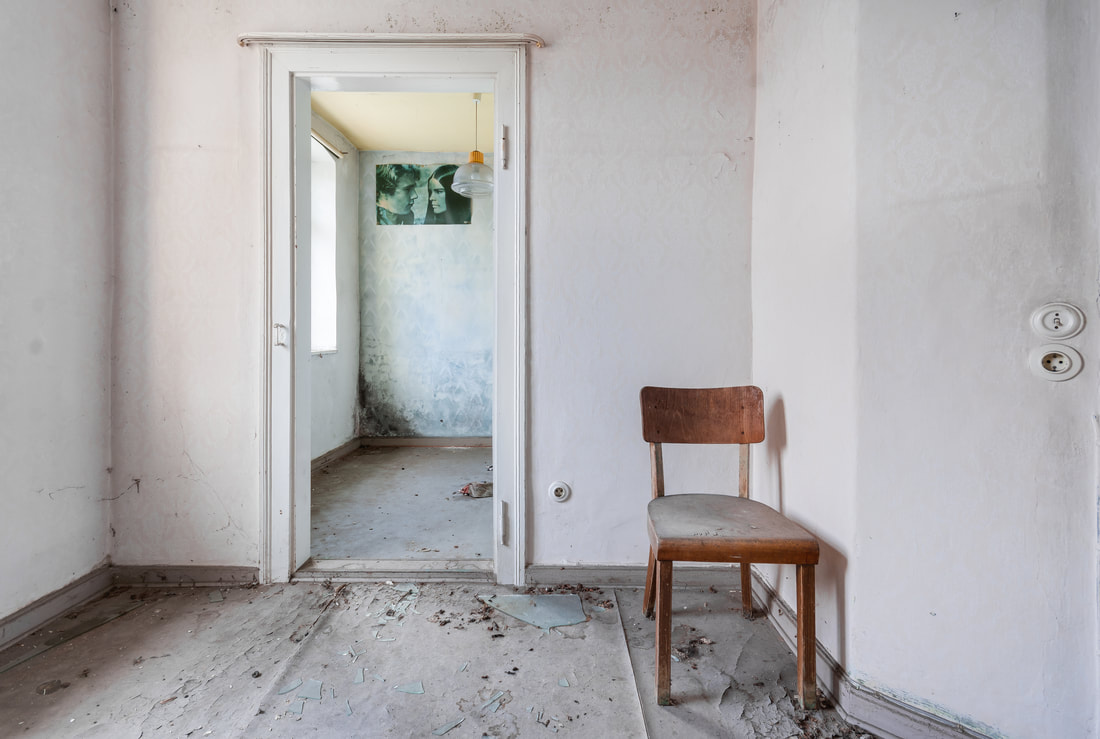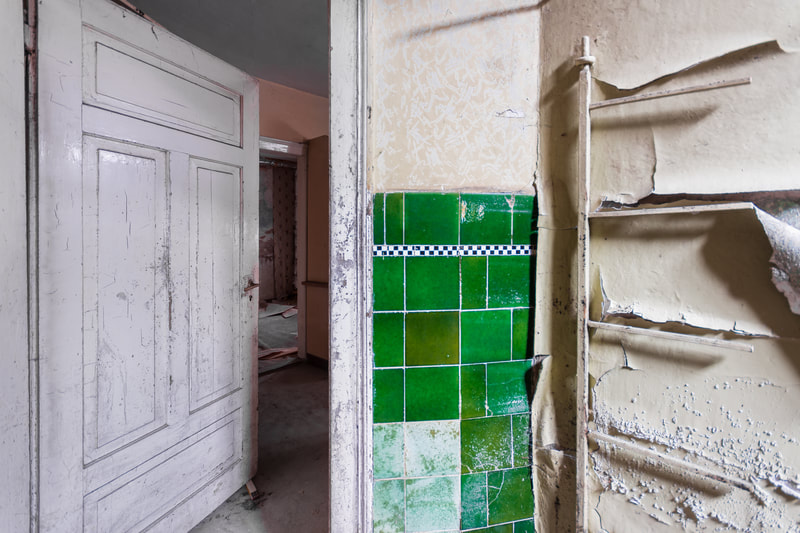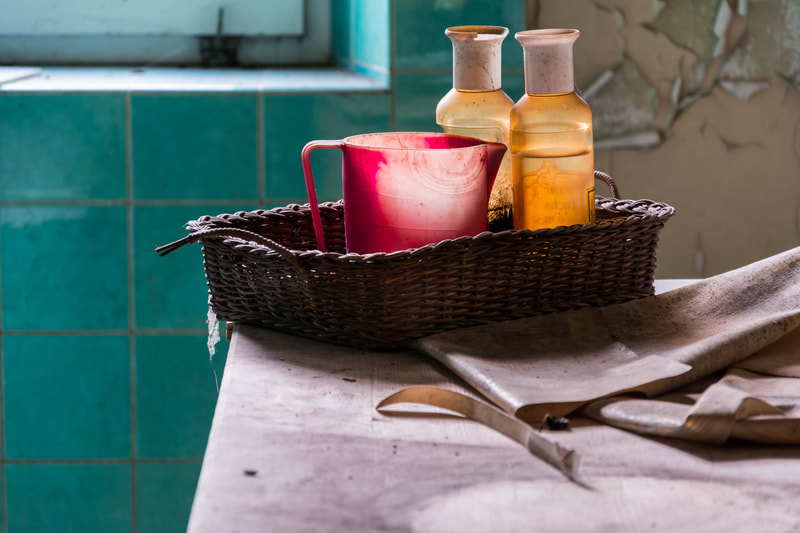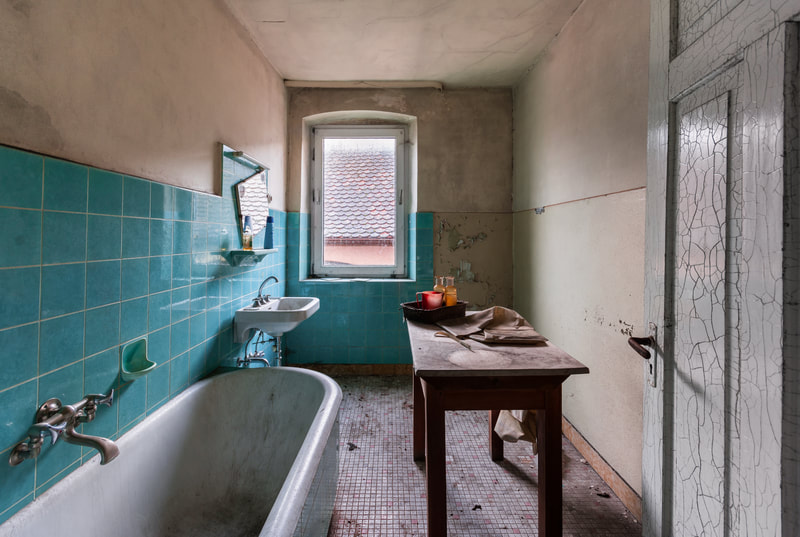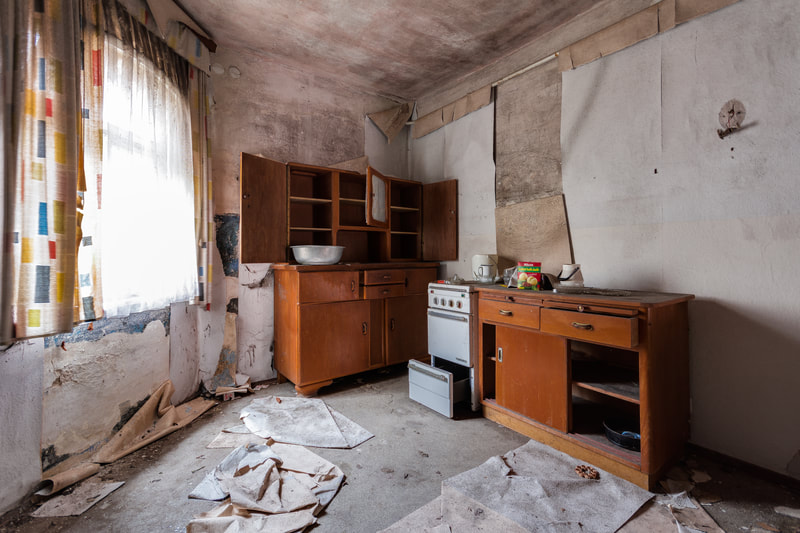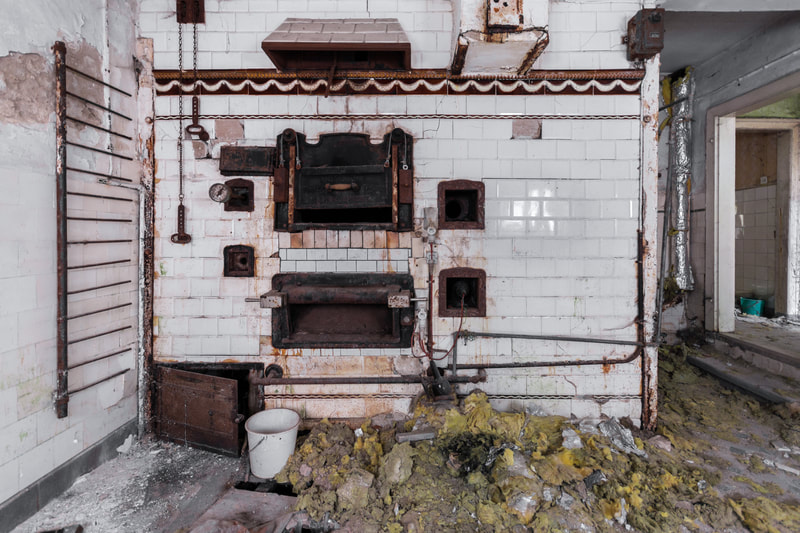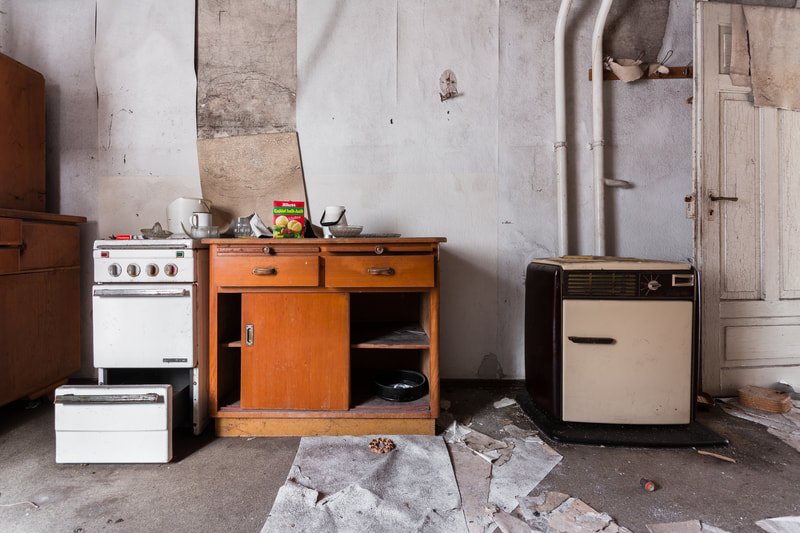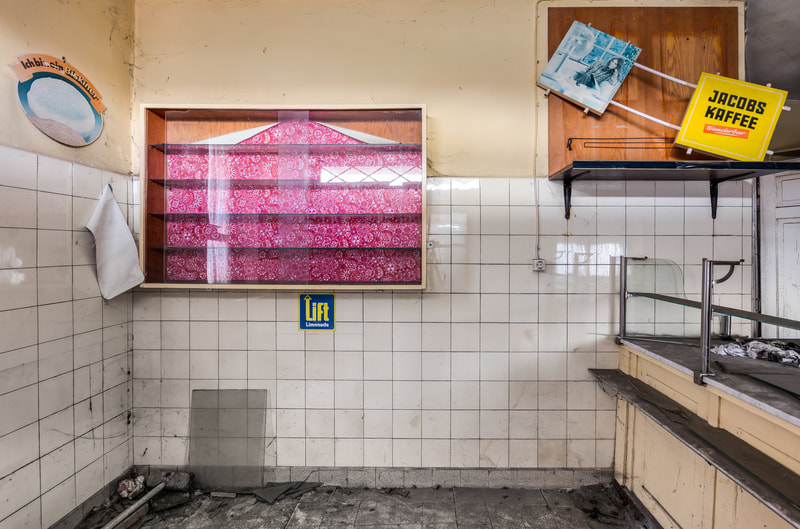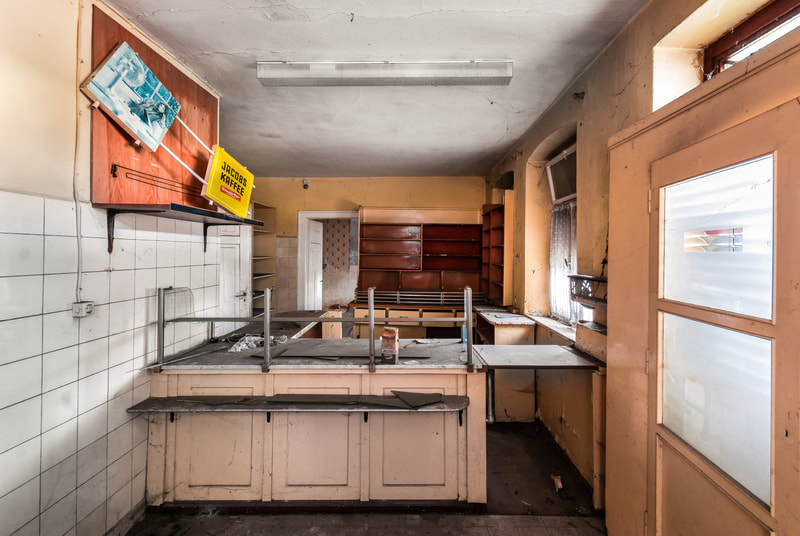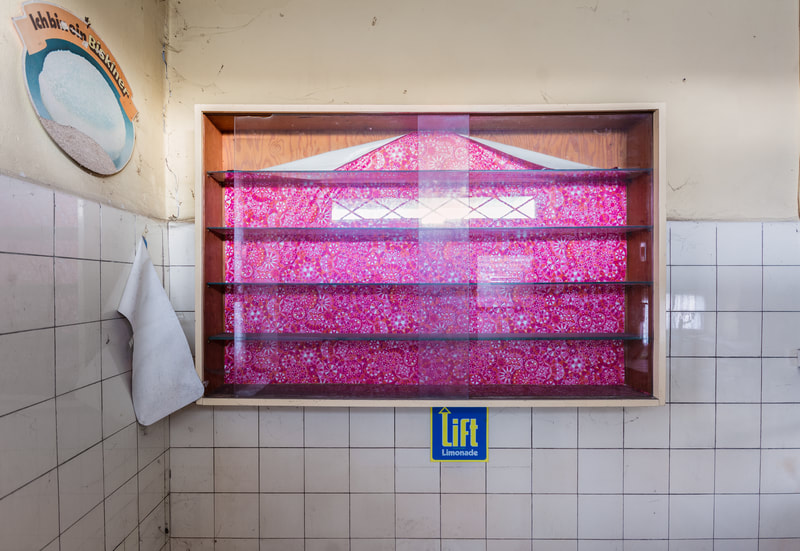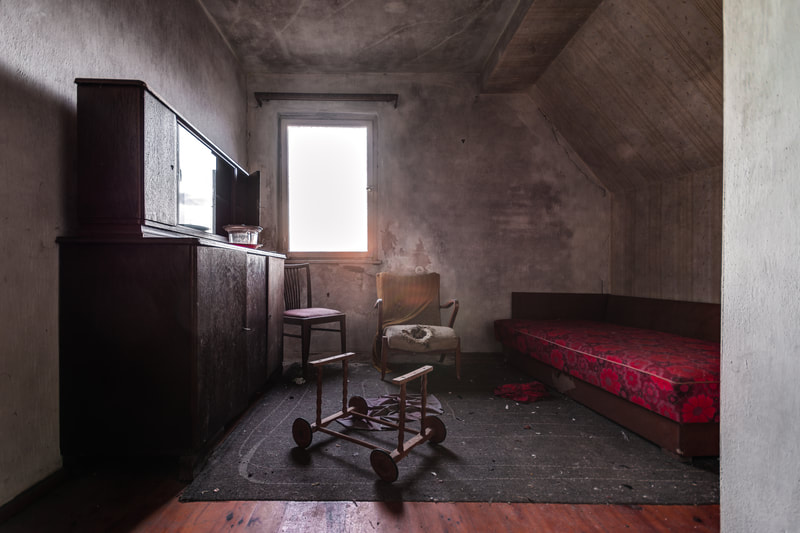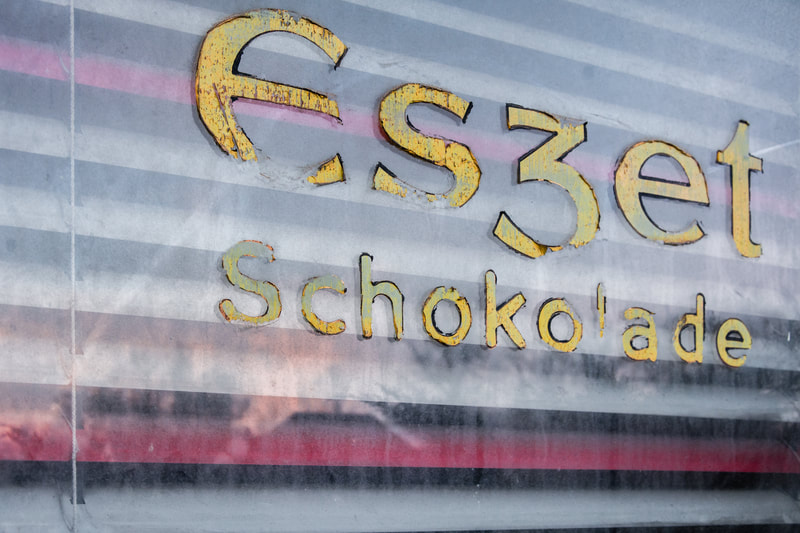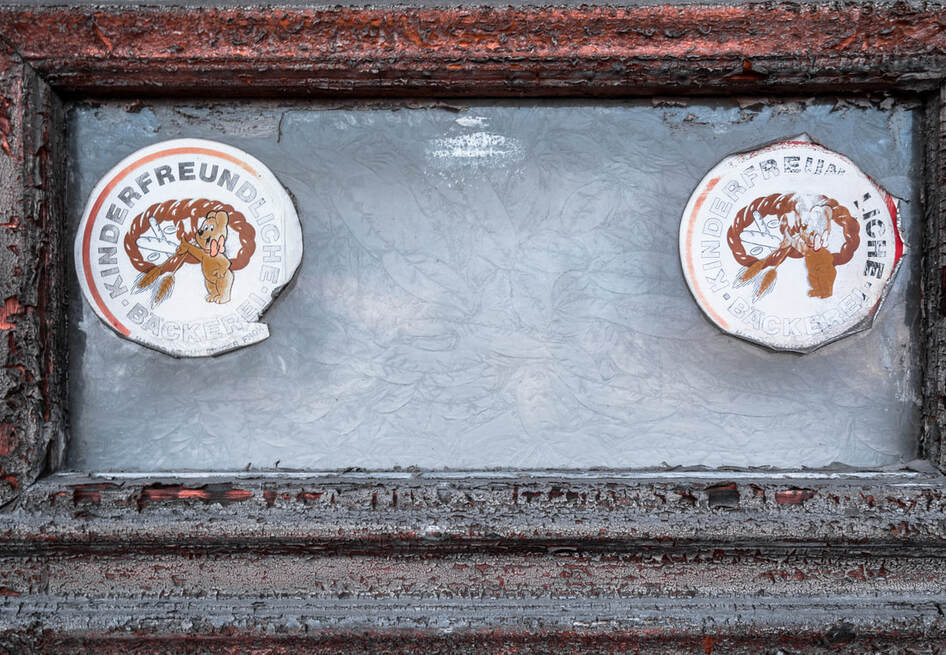Backstube Jacobs
“I looked down at the loaves on the baking stone, which, just as before, carried in their crusts
the overwhelming illusion of dark eyes, upturned noses, fissured mouths.[...]
Their eyes squinted merrily and their mouths curled into ragged, jack-o'-lantern grins.
The bread knife was the solution to all my problems.
I sawed and sawed and sawed until the faces were no more."
(Robin Sloan, "Sourdough")
the overwhelming illusion of dark eyes, upturned noses, fissured mouths.[...]
Their eyes squinted merrily and their mouths curled into ragged, jack-o'-lantern grins.
The bread knife was the solution to all my problems.
I sawed and sawed and sawed until the faces were no more."
(Robin Sloan, "Sourdough")
Anno 1958. Einmal wöchentlich lautet die Bestellung wie folgt: 20 Liter Frischmilch und 20 Liter Buttermilch. Insgesamt 6 DM. Im Monat Juli '58 entstanden dem Bäcker für diese Milchprodukte insgesamt 24 DM an Kosten. Betrag dankend erhalten ist unter der Rechnung vermerkt.
Nichts weiter als die Milchbestellung eines Bäckermeisters und doch ein Stück Zeitgeschichte. Weitere Quittungen und Rechnungen liegen auf einem kleinen Tisch verteilt. Die meisten ebenfalls aus den späten 50er Jahren. Die Zeit scheint still zu stehen Seit dem Zweiten Weltkrieg ist gerade einmal ein Jahrzehnt vergangen. Doch in Deutschland war eine bessere Zeit angebrochen - man befand sich in den Aufbaujahren. Der Zeit des Wirtschaftswunders. Die Kriegstraumata wollte man möglichst hinter sich lassen oder man verdrängte eben. Nun sollte der neue Wohlstand gelebt werden. Es wurde konsumiert - und gebacken. In der kleinen Bäckerei zwar nicht unbedingt für die Massen - so war es doch vor allem der Massenkonsum, der plötzlich en vogue wurde. Aber das macht die alte Backstube nicht weniger interessant. So ist sie eher ein Beispiel für den kleinen Dorfbäcker, der in der Regel auch ein beliebter Treffpunkt im Dorf war.
Betritt man den Verkaufsraum im Erdgeschoss so könnte man meinen, man sei in einem Museum gelandet. Die kleine, antiquiert wirkende Verkaufstheke, die Werbung für Jacobs Kaffee auf einem einfachen Holzschild. Die Zeit scheint wie eingefroren. Doch die Auslagen bleiben leer und der alte Ofen im Backraum kalt. Wann hier für immer das letzte Brot gebacken wurde ist nicht eindeutig zu sagen. Schätzungsweise in den 70er - 80er Jahren dürfte der Betrieb endgültig eingestellt worden sein. So gibt es die originale Eszet-Schokolade, wie Werbung für diese am Fenster der Bäckerei zu finden ist, seit 1975 nicht mehr und der alte Haribo-Aufkleber, der auf eine "kinderfreundliche Bäckerei" am Eingang hinweist, dürfte Recherchen zufolge aus den '80er Jahren stammen.
Nichts weiter als die Milchbestellung eines Bäckermeisters und doch ein Stück Zeitgeschichte. Weitere Quittungen und Rechnungen liegen auf einem kleinen Tisch verteilt. Die meisten ebenfalls aus den späten 50er Jahren. Die Zeit scheint still zu stehen Seit dem Zweiten Weltkrieg ist gerade einmal ein Jahrzehnt vergangen. Doch in Deutschland war eine bessere Zeit angebrochen - man befand sich in den Aufbaujahren. Der Zeit des Wirtschaftswunders. Die Kriegstraumata wollte man möglichst hinter sich lassen oder man verdrängte eben. Nun sollte der neue Wohlstand gelebt werden. Es wurde konsumiert - und gebacken. In der kleinen Bäckerei zwar nicht unbedingt für die Massen - so war es doch vor allem der Massenkonsum, der plötzlich en vogue wurde. Aber das macht die alte Backstube nicht weniger interessant. So ist sie eher ein Beispiel für den kleinen Dorfbäcker, der in der Regel auch ein beliebter Treffpunkt im Dorf war.
Betritt man den Verkaufsraum im Erdgeschoss so könnte man meinen, man sei in einem Museum gelandet. Die kleine, antiquiert wirkende Verkaufstheke, die Werbung für Jacobs Kaffee auf einem einfachen Holzschild. Die Zeit scheint wie eingefroren. Doch die Auslagen bleiben leer und der alte Ofen im Backraum kalt. Wann hier für immer das letzte Brot gebacken wurde ist nicht eindeutig zu sagen. Schätzungsweise in den 70er - 80er Jahren dürfte der Betrieb endgültig eingestellt worden sein. So gibt es die originale Eszet-Schokolade, wie Werbung für diese am Fenster der Bäckerei zu finden ist, seit 1975 nicht mehr und der alte Haribo-Aufkleber, der auf eine "kinderfreundliche Bäckerei" am Eingang hinweist, dürfte Recherchen zufolge aus den '80er Jahren stammen.
Anno 1958. Once a week the order goes as follows: 20 liters of fresh milk and 20 liters of buttermilk. 6 DM ("Deutsche Mark", former German currency) in total. In the month of July '58 the baker had to pay 24 DM for the order of those dairy goods. Payment received is noted on the invoice.
It doesn't seem much more than the average milk order of a baker. yet it's become a piece of history. There are many more receipts and invoices scattered around on a small table. Most of them date back to the late '50s as well. Time seems to stand still. It's not more than a rough decade since WWII. has ended. Yes, in Germany a better era has started to blossom. It was the time of the German Wirtschaftswunder (literally "economic miracle"). People wanted to forget all the traumatic war experiences or at least tried to suppress them. It was the time of wanting to live and embrace the new prosperity. It was the time of consumption - and baking. Even if it was specially mass consumption that had become in vogue, it doesn't make the small bakery less interesting. It is more of an example for the typical small bakery that was the meeting place of the local community.
Upon entering the sales area on the ground floor it feels like being right in the middle of a museum. The small and old-fashioned sales counter as well as the old "Jacobs" coffee advertisement on a plain wooden sign. Time seems to stand still completely. Yet, the shelves stay empty and the oven stays cold. Whenever the last bread might have been baked cannot be told for sure. Probably, the small bakery was shut down for good in the '70s - '80s, as for example, the old advertisement of "Eszet chocolate" in one of the bakery's windows indicates. Since the production of Eszet was stopped in 1975. And then there is the old Haribo sticker on the front door that welcomes you to a "children-friendly bakery" and which can be dated back to approximately the 1980s.
It doesn't seem much more than the average milk order of a baker. yet it's become a piece of history. There are many more receipts and invoices scattered around on a small table. Most of them date back to the late '50s as well. Time seems to stand still. It's not more than a rough decade since WWII. has ended. Yes, in Germany a better era has started to blossom. It was the time of the German Wirtschaftswunder (literally "economic miracle"). People wanted to forget all the traumatic war experiences or at least tried to suppress them. It was the time of wanting to live and embrace the new prosperity. It was the time of consumption - and baking. Even if it was specially mass consumption that had become in vogue, it doesn't make the small bakery less interesting. It is more of an example for the typical small bakery that was the meeting place of the local community.
Upon entering the sales area on the ground floor it feels like being right in the middle of a museum. The small and old-fashioned sales counter as well as the old "Jacobs" coffee advertisement on a plain wooden sign. Time seems to stand still completely. Yet, the shelves stay empty and the oven stays cold. Whenever the last bread might have been baked cannot be told for sure. Probably, the small bakery was shut down for good in the '70s - '80s, as for example, the old advertisement of "Eszet chocolate" in one of the bakery's windows indicates. Since the production of Eszet was stopped in 1975. And then there is the old Haribo sticker on the front door that welcomes you to a "children-friendly bakery" and which can be dated back to approximately the 1980s.
